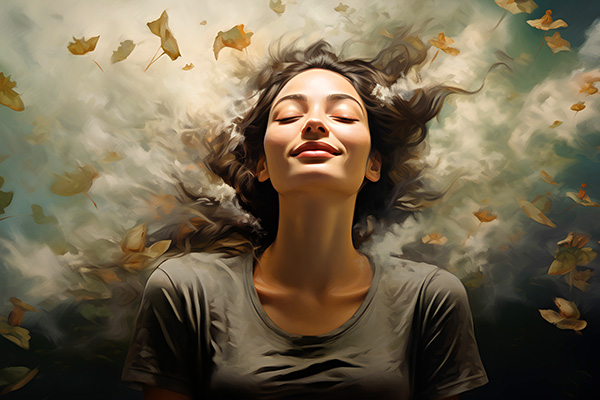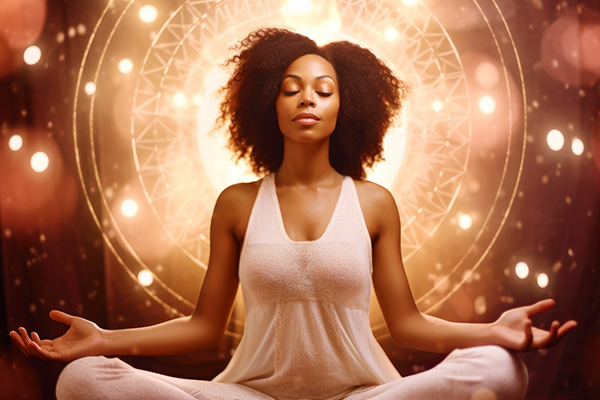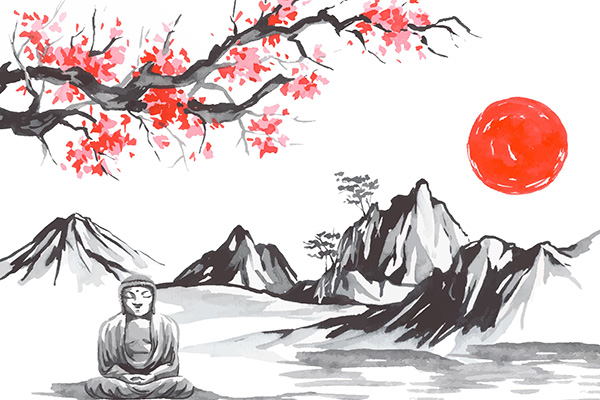The Significance of Quality Sleep for Spiritual Health
 Many individuals often overlook the significance of sleep. It is not solely beneficial for your physical and mental state but is also crucial for your spiritual health and personal development.
Many individuals often overlook the significance of sleep. It is not solely beneficial for your physical and mental state but is also crucial for your spiritual health and personal development.
In my psychic readings, one of the initial aspects I examine is my client’s aura. I can usually determine fairly quickly if they are receiving sufficient quality sleep as their energy reflects it. A luminous, harmonious aura generally indicates they are rested and revitalized, whereas a faded or chaotic energy field often suggests a lack of sleep.
Certainly, low energy can stem from various factors such as a poor diet, emotional burdens, or interactions with individuals who inadvertently deplete your energy. However, in my experience, the most frequent and disregarded cause is simply inadequate sleep. Insufficient rest impacts all areas of your life, leading to feelings of fatigue, irritability, and disconnection from your inner light.
Quality sleep nurtures your intuition, sharpens your awareness, and boosts your vitality. It nourishes not just your physical form but also your energetic frameworks like the aura, chakras, and etheric field. Insufficient rest can cloud your psychic abilities, make emotional regulation more complicated, and lessen your connection to spiritual guidance.
The repercussions accrue over time. You might experience emotional instability, mental disarray, or forgetfulness. You may even notice physical symptoms such as elevated blood pressure. If this persists for too long, it may result in more severe issues like depression, where feelings of hopelessness permeate, making everything feel like a struggle. Your energy wanes, happiness diminishes, and your spiritual vitality fades.
I recall a client whose sister exhibited early indications of heart issues. During the reading, the spirit conveyed a clear message that her sister required more rest. She was balancing a full-time job while parenting alone, rarely allowing herself genuine rest. Her weariness morphed into chronic stress, mood fluctuations, guilt, and a painful disconnection from herself and her family.
Even a soul immersed in slumber is diligently working and contributing to the world ~ Heraclitus
This session lingered in my mind. I was inclined to delve into what the spirit had revealed, and I discovered medical research linking chronic sleep deprivation with heart conditions. It served as a profound reminder that rest is imperative, not a luxury. That message applied not only to her sister but to me as well. I recognized my necessity for deep rest for my body, mind, and soul.
Sleep As A Spiritual Practice
Have you ever pondered why we actually need sleep? You’re not alone, and the definitive answer remains elusive. Despite advancements in sleep research, the fundamental reason we dedicate nearly a third of our lives to sleep continues to be one of life’s great mysteries!
Researchers have suggested numerous compelling theories on why sleep is necessary, supported by various evidence. The consensus is that sleep serves multiple significant purposes. However, while scientists examine biological and neurological aspects, they frequently overlook a crucial element: the spiritual significance of sleep.
During sleep, particularly in the Rapid Eye Movement (REM) phase, we enter an altered consciousness where the boundary between realms becomes thin. We dream, engage in astral travel, and receive messages from our guides, ancestors, and higher selves. This nightly voyage is essential for our spiritual development, insight, and healing.
The quality of our slumber is intrinsically linked to our spiritual health. A restless night may signify more than a physical issue—it could indicate spiritual disarray or unresolved energetic concerns that require attention. Hence, spiritual practices should be employed to deliberately prepare our minds, bodies, and spirits for restorative rest and spiritual engagement.
Several vital spiritual reasons exist for our need to sleep:
Receiving divine insights and messages. During the deepest phases of sleep, we reconnect with the spiritual realm and the divine. With the conscious mind and ego quieted, it becomes easier to receive intuitive guidance, healing energy, and elevated wisdom. This altered state enables us to absorb insights from our higher selves, ancestors, spirit guides, angels, and the divine.
Linking with universal consciousness. While asleep, our personal awareness merges with the collective consciousness and the Akashic Records or universal mind. This sacred connection allows us to obtain metaphysical information, inspiration, and clarity. Solutions often materialize after a restful night.
Astral projection and soul exploration. In the REM stage of sleep, our astral form detaches from the physical body to traverse other dimensions and connect with other souls. These journeys facilitate our growth, learning, and encounters with loving spiritual entities like guides, angels, or ascended masters. The vivid, narrative-style dreams we have are often reflections of our soul’s travels while the body is at rest. The dreams we later recall commonly consist of fragments of these spiritual explorations. To ensure this process, the body also enters a state of temporary paralysis to protect us physically, allowing our souls to journey without waking us or causing movements that might lead to injury. If we awaken before the body fully exits this state, we may experience sleep paralysis along with unusual sensations of being stuck, confined, floating, or not entirely re-entered into the body as of yet.
Psychic cleansing and energy restoration. Sleep offers an excellent opportunity for our bodies to cleanse their energy. Our aura gets revitalized as we release emotional remnants, negative energy, and psychic accumulation from the day. This sacred purification promotes comprehensive healing—not only physically but also emotionally, mentally, and spiritually.
Subconscious processing and shadow work. Dreams assist the subconscious mind in processing daily experiences, emotions, and unresolved patterns. Frequently, they highlight aspects of our “shadow self,” which encompass the concealed or suppressed parts of our identity. By engaging our imagination to confront and comprehend these aspects of ourselves, we foster spiritual growth.
The Law of Attraction and manifestation. Sleep is one of the most underrated tools for manifestation. When at rest, your subconscious is exceptionally receptive to new concepts. To create something, you must establish clear intentions before sleeping. This can be done through visualizing your desires or affirming your objectives. Such actions will align your energy with your aspirations. It’s a moment when outdated beliefs can be transformed and new realities can begin forming.
A dream is a microscope through which we examine the hidden phenomena of our soul ~ Erich Fromm
The Importance Of Dream Journaling
Dreams serve as a primary method for our soul to connect with inner guidance and profound truths. Dreams offer valuable perspectives on life’s obstacles, glimpses into the future, or karmic lessons associated with our soul’s mission. This nightly reconnection acts as nourishment for the soul, replenishing the mind, body, and spirit, and frequently providing a sense of purpose and clarity upon waking. It is no surprise that we often mention “sleep on it” when faced with significant decisions!
Many individuals express, “I don’t dream.” However, the reality is that everyone dreams. The real hurdle lies in recalling those dreams. Maintaining a dream journal, setting an intention before sleeping, and remaining still for a few moments after awakening can significantly aid in remembering your dreams more vividly. These dream revelations can become potent instruments for guidance and even manifestation.
To fully harness this ability, preparation is essential. Restful, restorative sleep serves as the foundation. Below are some effective tips I personally implement and often share with clients to help establish optimal conditions for profound sleep and significant dreams.
Natural Sleep Remedies & Enhancers
A variety of natural and holistic supplements can enhance sleep quality:
Magnesium: Relaxes the body and soothes the mind. It also aids in the production of melatonin, the hormone essential for sleep. Acquire more magnesium by consuming leafy greens, nuts, and seeds—or consider taking a supplement before bedtime.
Lavender: A calming fragrance that alleviates anxiety and enhances the ease of falling asleep. It can be utilized in a diffuser, sprayed on your pillow, or applied lightly (diluted with oil) on your temples or wrists.
Chamomile: This gentle herb has long been utilized for relaxation. A warm cup of chamomile tea before bedtime can help calm the mind, relieve tension, and facilitate easier drifting off to sleep.
Valerian Root: A natural sleep aid that promotes quieting the nervous system and is often utilized to relieve restlessness and anxiety. It can be taken as a tea, capsule, or tincture.
Tart Cherry Juice: These cherries contain tryptophan, which assists your body in producing melatonin. Consuming tart cherry juice in the evening may expedite the process of falling asleep and enhance sleep quality.
Ashwagandha: This potent herb helps your body manage stress. It decreases cortisol (the stress hormone), which can calm an overactive mind and facilitate easier sleep onset.
Passionflower: Known for its soothing properties. It can alleviate mental noise and foster relaxation, particularly for those who experience light sleep or mild insomnia.
Melatonin: A natural hormone produced by your body to help regulate sleep patterns. A small supplement can assist if your sleep cycle is disrupted due to travel, work shifts, or low natural levels.
L-Theanine: Found in tea leaves, L-theanine promotes relaxation without inducing sleepiness. It can reduce tension and facilitate more peaceful sleep throughout the night. It is present in green and black tea or taken as a supplement.
Natural Rhythms: Honor your innate circadian rhythms. Aim to maintain a regular bedtime and wake-up time daily. Your body and spirit thrive on routine. Sleep is also a component of your spiritual practice.
Sleep is the golden chain that links health and our bodies together ~ Thomas Dekker
Spiritual Ways To Support Better Sleep
Numerous spiritual traditions provide straightforward methods to enhance sleep quality. These practices calm your energy, clarify your mind, and make your environment feel safe and sacred.
Bedtime Prayer: While reciting a prayer at bedtime might appear outdated, it proves effective. For generations, individuals have turned to it as a means to conclude the day with serenity and clarity. Before sleeping, take a quiet moment to pray following a long day. Speak sincerely. Request assistance in releasing burdens, whether they be stress, worries, or residual energy from the day. Prayer is a potent means to clear your mind, soothe your spirit, and reconnect with your core values. Let your words become a conduit to heavenly rest.
Meditation & Breathing: Mind-body practices such as meditation, progressive muscle relaxation, and mindfulness breathing can quiet an overactive mind and alleviate stress, preparing your body for slumber.
Chakra Balancing: Chakras are energy centers within your body. If they are misaligned, particularly your third eye or crown chakra, it can disturb your sleep. Gentle meditations, comforting crystals like amethyst, or soothing sounds can assist in restoring balance to your energy and facilitate restful sleep.
Sacred Space: Your sleep space should resemble a sanctuary. Keep it dark, serene, and free from electronic devices. Clear any dense or negative energy by smudging with sage or palo santo. Position calming crystals such as tourmaline or obsidian near your bed, or amethyst or lepidolite under your pillow. You might also incorporate sacred symbols to cultivate a tranquil, healing atmosphere. Transform your sleeping space into one of divine rest.
Lucid Dreaming & Astral Practices: If you’re prone to restless nights or unsettling dreams, you might explore techniques that enable conscious awareness while dreaming. Enhancing your consciousness within dreams can empower you to confront fears and feel more in control of your sleep experience.
Cord-Cutting: Occasionally, we maintain energetic ties to people, situations, or thoughts that drain us. Before sleeping, visualize a simple act of severing these connections with a light sword or golden scissors. This practice can help you feel lighter, calmer, and more liberated.
Dream Journaling: Keep a notebook beside your bed. Upon waking, jot down your dreams, even fragments. Reviewing these dreams over time can deepen your understanding of your inner world and alleviate any worries or emotional tensions they might evoke.
Astral Guides & Spirit Guardians: Certain spiritual paths acknowledge spirit guides or astral protectors who safeguard and guide us during sleep. You may utter a brief prayer, light a candle, or simply invite assistance from these benevolent spirit helpers to bring tranquility and safety to your slumber.
Crystal Grid: A crystal grid is a deliberate arrangement of stones with intention. Utilize calming crystals such as amethyst, howlite, or selenite. Position them in a small pattern beneath your bed or close to your pillow to infuse your space with calming energy.
Shamanic Journey: A shamanic journey is a meditative technique that employs rhythmic drumming or sounds to guide you into an altered state akin to dreaming. These guided experiences can assist in releasing fears, reclaiming lost energy, or inviting in a protective spirit animal during sleep.
Herbal & Moon Magic: Combine soothing herbs with lunar energy. Consider creating a sleep pouch filled with lavender or mugwort, and leave it outdoors under the full moon to charge. Place it beneath your pillow to imbue your dreams with the moon’s calming energy.
Aura Cleansing: Your aura is your energetic field. If it feels heavy or “off,” it can negatively impact your sleep. Before retiring for the night, envision brushing off the day’s fatigue like dust, or picture yourself radiating white or golden light. This can contribute to feeling lighter, safer, and more relaxed.
Sleep transcends the physical realm; it is sacred. Authentic rest enhances your vibration, fortifies your aura, and illuminates the path ahead. Adequate sleep is not a luxury but a spiritual necessity. If you’ve been experiencing fatigue, anxiety, or a sense of stagnation, reflect on your sleep habits. It could be the crucial factor that transforms your life.
|
Moon Goddess is a third-generation empathic healer and clairvoyant. She began providing healing readings over 20 years ago and has always been deeply interested in metaphysical studies since childhood. Her heightened sensitivity allows her to notice and predict events before they happen. By utilizing Tarot and the assistance of her Guides, she supports many individuals globally. Following his transition, her grandfather honored his promise by returning to say farewell, providing her with an extraordinary experience. Moon is convinced there is a magnificent Heaven, and her experiences have assisted many following loss or grief. Obtain a reading with Moon Goddess now at PsychicAccess.com. |
In today’s rapidly moving environment, the significance of a restful night’s sleep for our overall health can sometimes be underestimated. Yet, sleep fulfills a critical role not only in our physical health but significantly in our spiritual welfare. In reality, securing adequate, restorative sleep is vital for sustaining a strong connection to our spiritual essence and achieving a state of inner tranquility and balance.
One primary reason sleep is essential for spiritual health is that it permits our minds to recuperate and recharge. When sleep-deprived, our thoughts can become scattered, and our emotions can amplify, complicating our connection with our spiritual selves. Conversely, with proper rest, our minds achieve clarity and focus, facilitating easier meditation, prayer, or other spiritual engagements.
Moreover, sleep is crucial for maintaining a healthy energy equilibrium within our bodies. Inadequate sleep can lead to energy depletions, resulting in feelings of fatigue and disconnection from our spiritual selves. In contrast, sufficient restorative sleep replenishes our energy levels, enabling us to feel more centered and connected to our spiritual essence.
In addition, sleep plays a critical role in our capacity to process and release adverse emotions. When well-rested, our minds effectively handle stress, anxiety, and other negative feelings that can obstruct our spiritual advancement. Conversely, sleep deprivation compromises our ability to cope with these emotions, making it more challenging to sustain a sense of inner peace and harmony.
In summary, ensuring sufficient restorative sleep is vital for preserving a robust connectivity to our spiritual selves and obtaining a sense of inner tranquillity and balance. By prioritizing sleep and integrating it into our daily routines, we can amplify our spiritual well-being and lead more fulfilling, meaningful lives. Therefore, when you find yourself tempted to forgo sleep for other pursuits, remember the crucial role that a good night’s sleep plays in nurturing your spiritual health. Continue reading








